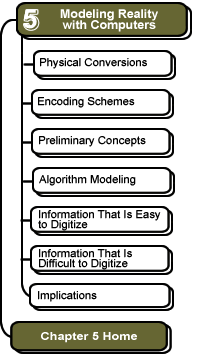

Preliminary Concepts: Fractional Binary Numbers
Just as we can use the decimal point to represent fractional amounts (such as 14.72), binary values can also represent fractional amounts. In base-10, the digit immediately to the right of the decimal point (7 in our example) represents 10-1 (that is, 7 x one-tenth). But in binary, a number to the right of the decimal point is 2-1, or one-half. The next digit to the right would be multiplied by one-fourth, and the next by one-eighth, and so forth. Most modern computers use a format called "IEEE floating-point" to represent very large numbers and fractional numbers in a manner similar to scientific-notation, using 2 rather than 10 as the base.
![]()
![]()
These pages were written by Steven H. VanderLeest and Jeffrey Nyhoff and
edited by Nancy Zylstra
©2005 Calvin University (formerly Calvin College), All Rights Reserved
If you encounter technical errors, contact computing@calvin.edu.